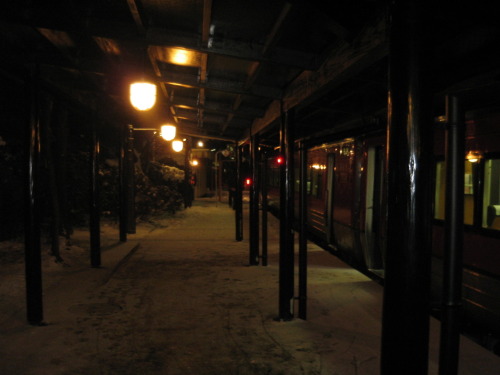Blog Post
Ten Little Yuzu Plants
wastholm.tumblr.com/post/3523089949/ten-little-yuzu-plants, posted 2011 by peter in food japan nature
Bookmark
BBC News - First robot marathon kicks off in Osaka, Japan
www.bbc.co.uk/news/world-asia-pacific-12565909?utm_source=twitterfeed&utm_medium=twitter, posted 2011 by peter in event japan robotics
Five knee-high androids have crossed the starting line in the world's first marathon for two-legged robots.
The contest is being held in the Japanese city of Osaka.
The contestants are expected to take four days to complete the course, which involves 423 laps of an indoor track.
Operators are allowed to change the robots' batteries and motors but if the machines fall over they must get up by themselves.
...
Organisers say they expect the race to be won not by the fastest robot but by the one that can withstand the most wear and tear.
Bookmark
WikiLeaks unveils Japanese spy agency
www.smh.com.au/technology/technology-news/wikileaks-unveils-japanese-spy-agency-20110220-1b17a.html, posted 2011 by peter in japan politics terrorism war
FOR the first time since World War II, Japan is establishing a secret foreign intelligence service to spy on China and North Korea and gather information to prevent terrorist attacks.
The spy unit has been created under the wing of Japan's peak intelligence agency, the Cabinet Intelligence and Research Office, or Naicho. It is modelled on Western intelligence services such as the CIA, the Australian Secret Intelligence Service and Britain's MI6.
The existence of the new Japanese espionage capability is revealed in a leaked US diplomatic cable obtained by WikiLeaks and provided exclusively to the Herald.
Bookmark
swissmiss | The Fresh Label
www.swiss-miss.com/2009/08/the-fresh-label.html, posted 2011 by peter in design food health japan
Design studio TO-GENKYO proposes a new method of tracking a foods expiration date by using a universally recognizable visual. Over the last year or so Japan had been struck by a number of scandals involving food companies tampering with expiration dates. The new design keeps people honest by changing colors based on the level of ammonia the food emits as it ages. After it has passed its expiration date the barcode is no longer readable, making it impossible to sell.
Bookmark
Urban decline in Japan: The alarm bells of Nagasaki | The Economist
www.economist.com/node/17909982, posted 2011 by peter in finance japan
In Mr Ikeguchi’s youth, when Nagasaki was rebuilding itself after nuclear devastation in 1945, the streets near his house rang with the sound of shipwrights walking to the Mitsubishi yard each morning. Now Nagasaki’s economy has gone still. The port city’s fortunes show how three forces sapping Japan’s energies—depopulation, overcentralisation and foreign competition—are hurting not just rural backwaters but once-prosperous cities on Japan’s fringe. The phenomenon remains partly hidden. Residents of luxury apartments across the bay complain about Irifune’s shabby appearance. If only they knew, Mr Ikeguchi says, how bad it really is.
Blog Post
Having Some Yakitori in Shinjuku, Tokyo
wastholm.tumblr.com/post/2608172626/having-some-yakitori-in-shinjuku-tokyo, posted 2011 by peter in food japan tokyo
Blog Post
Nagasaki Atomic Bomb Museum and Peace Park
wastholm.tumblr.com/post/2567709925/nagasaki-atomic-bomb-museum-and-peace-park, posted 2011 by peter in japan travel war
Blog Post
A Ride on the “Yufuin no Moriâ€
wastholm.tumblr.com/post/2567770897/a-ride-on-the-yufuin-no-mori, posted 2011 by peter in japan travel
|< First < Previous 201–210 (276) Next > Last >|






![[photo]](/images/peter_autumn)